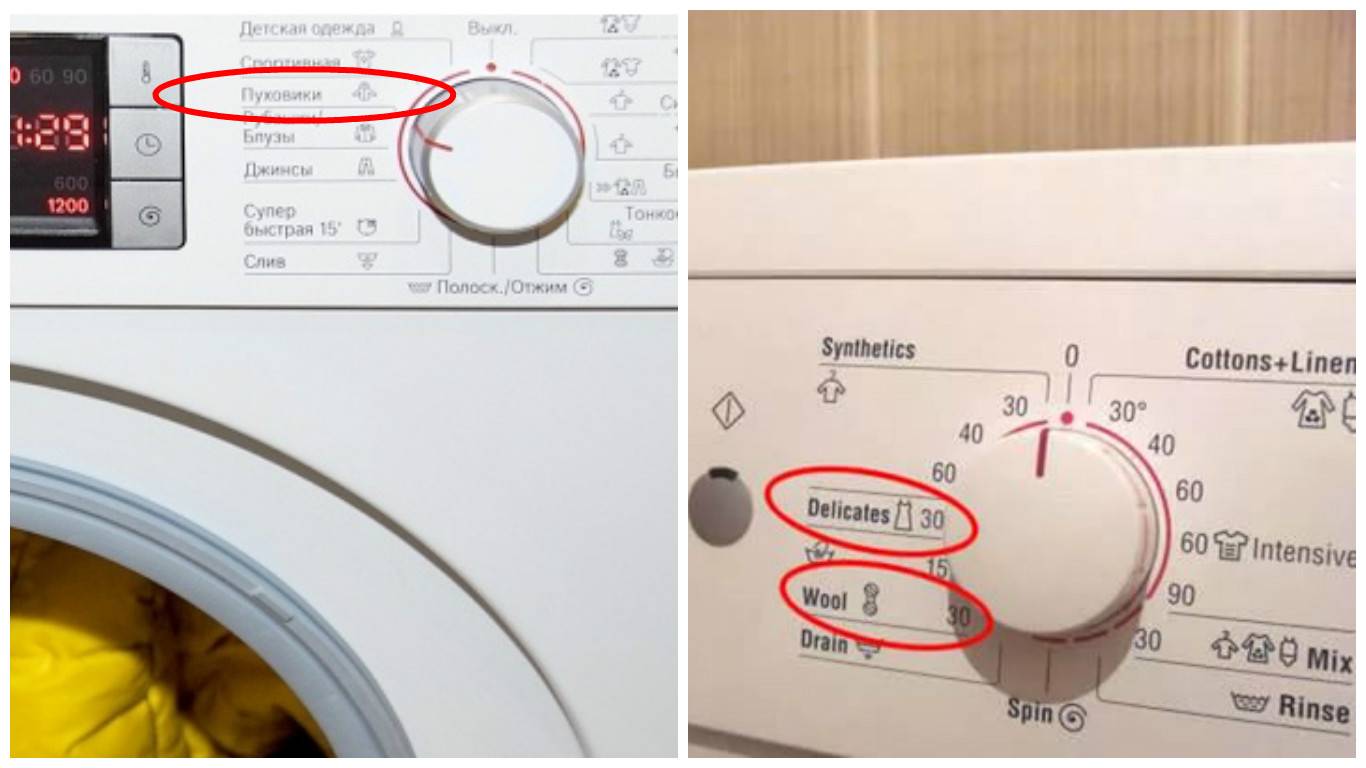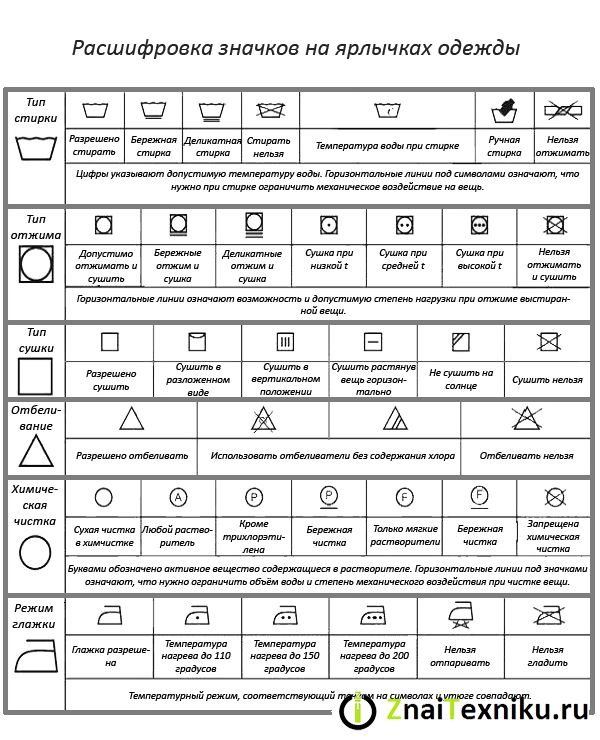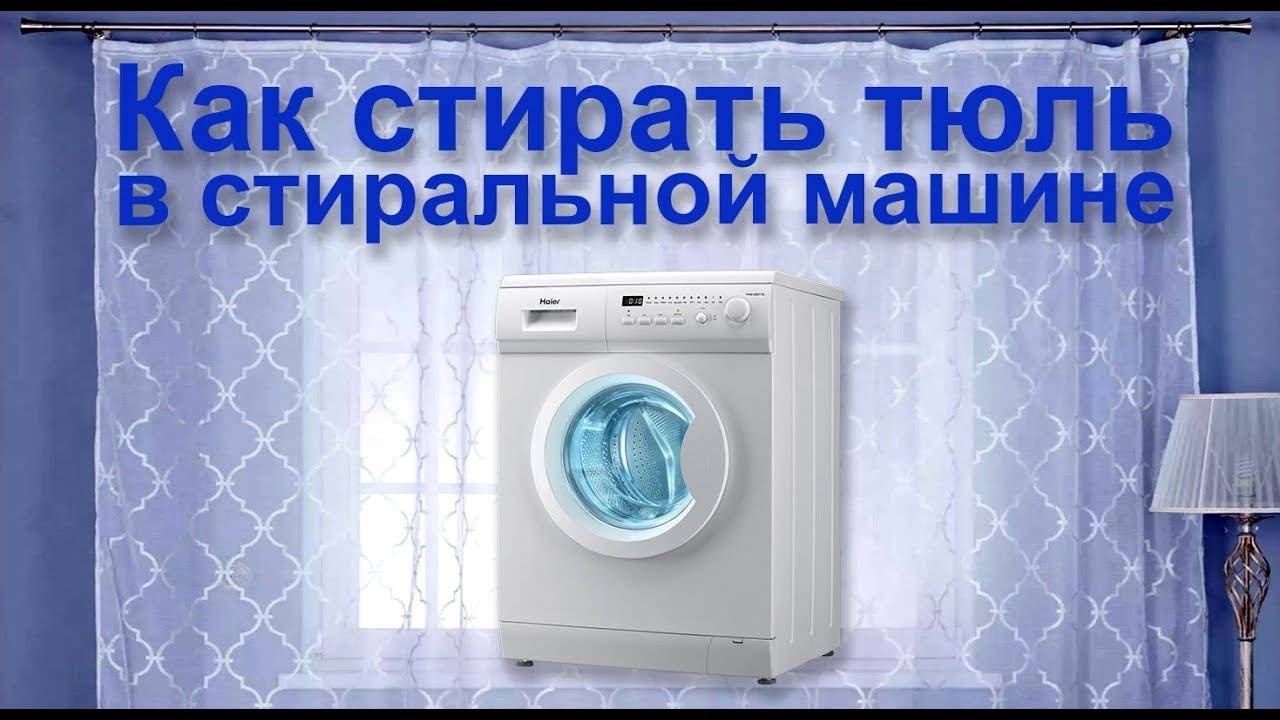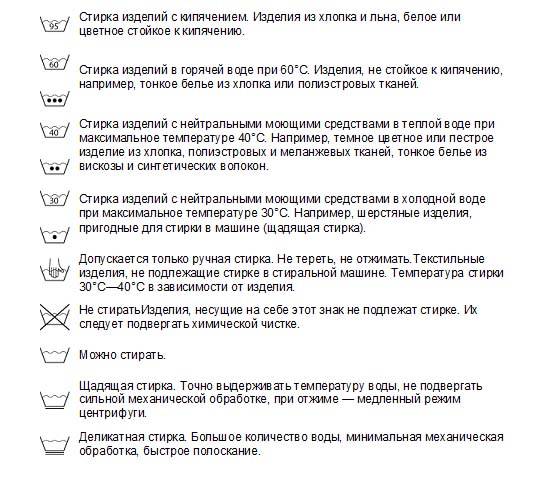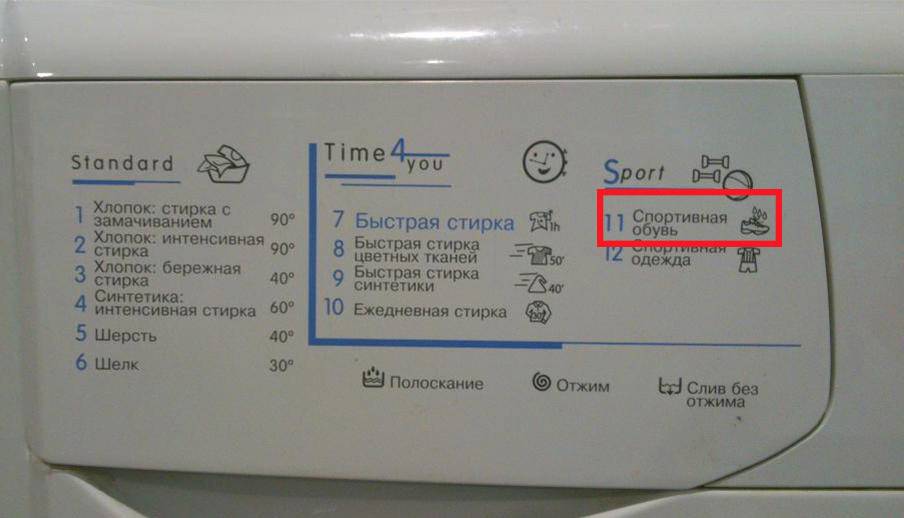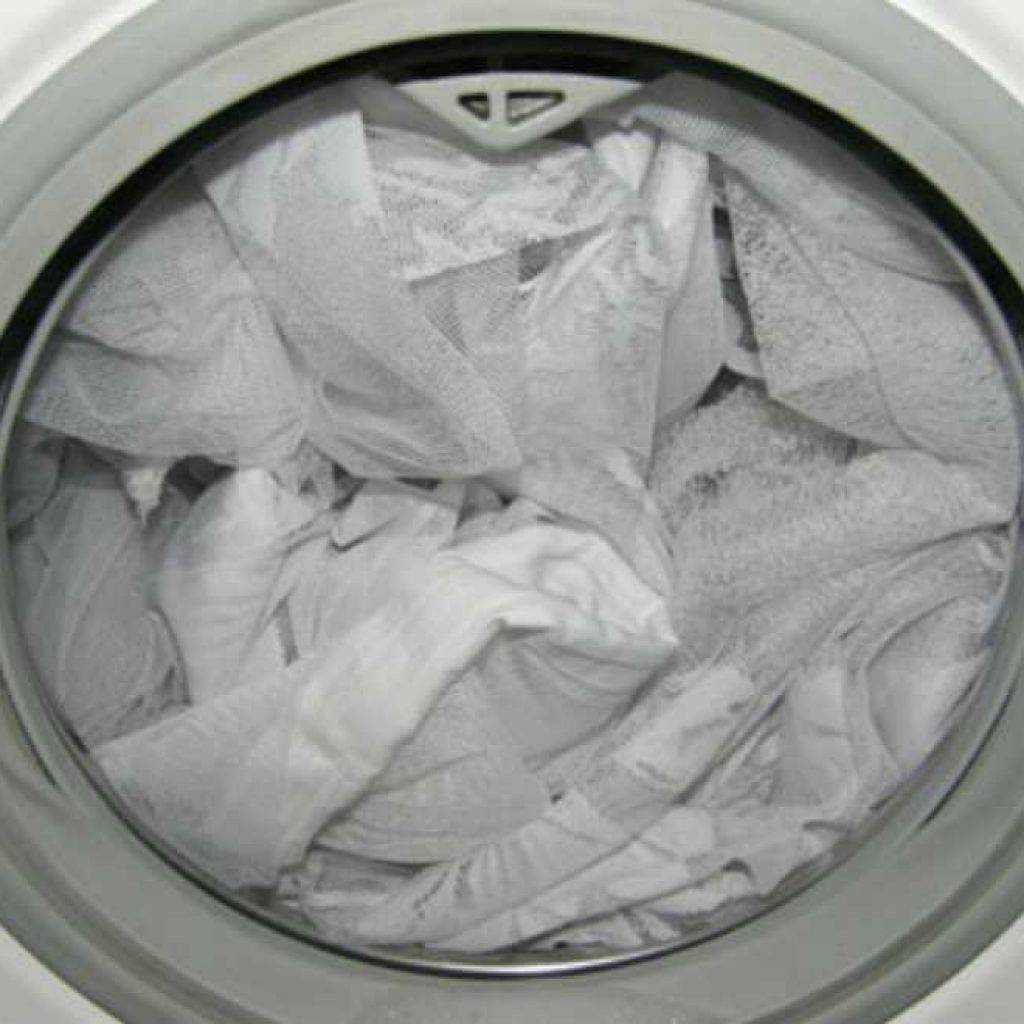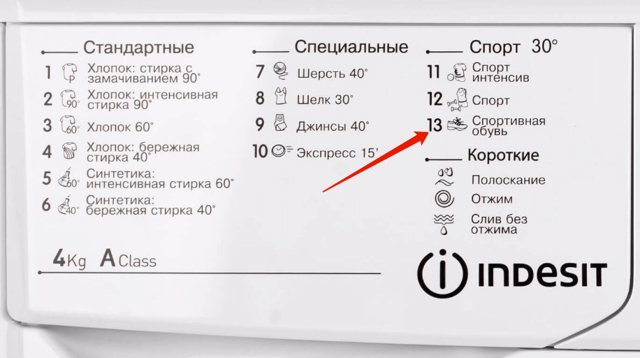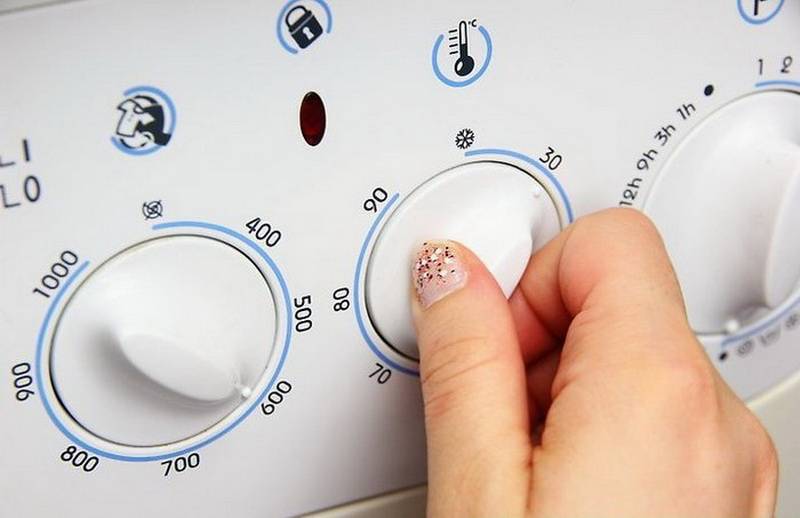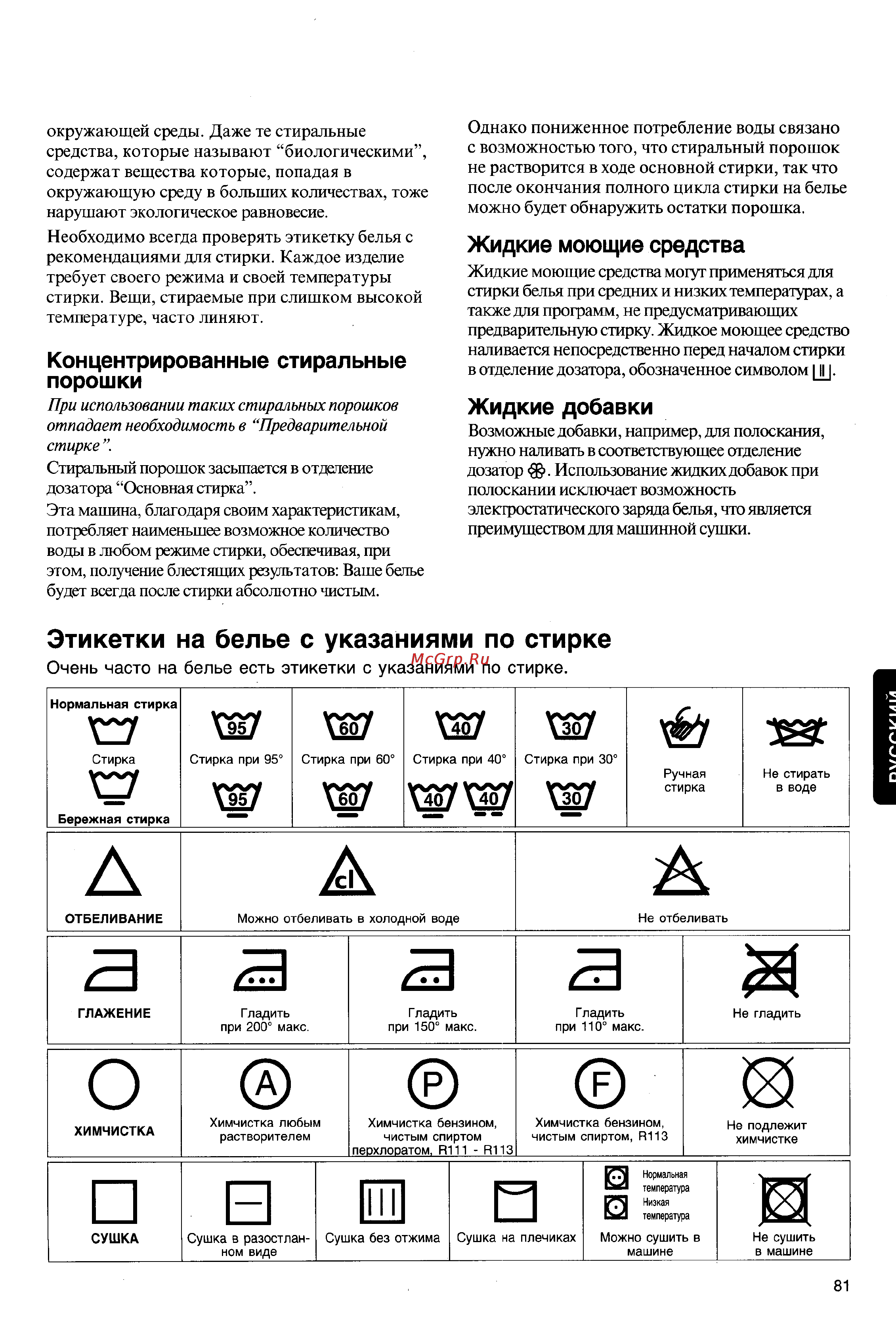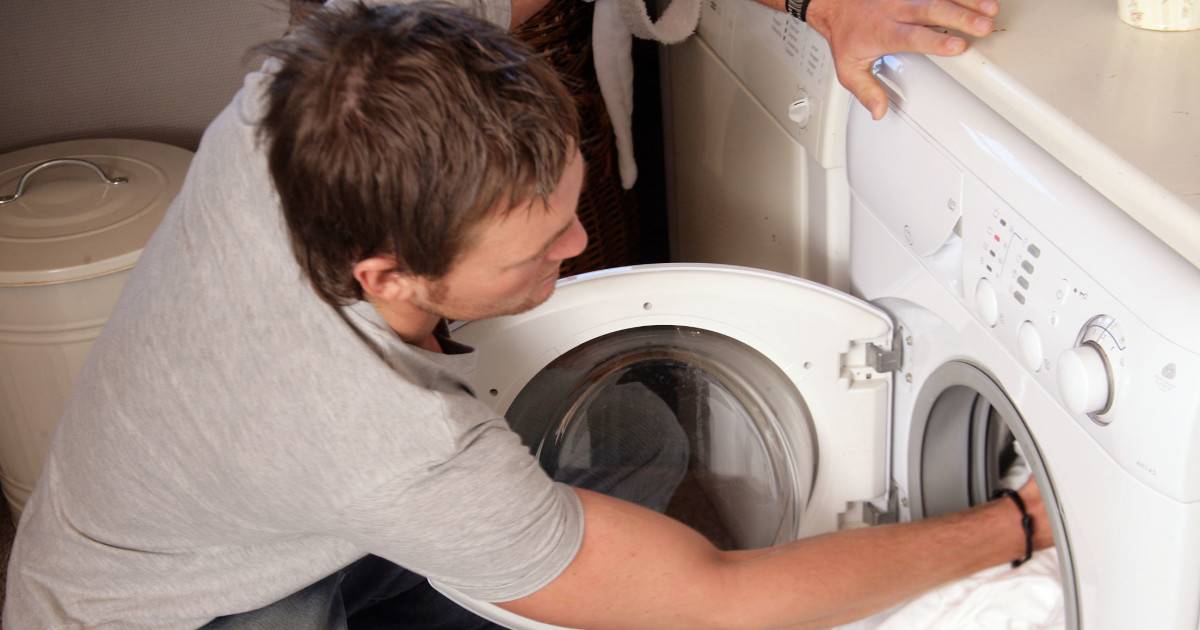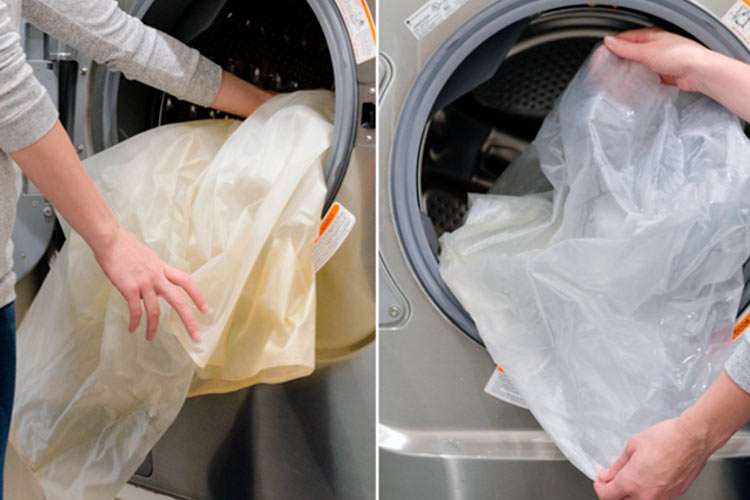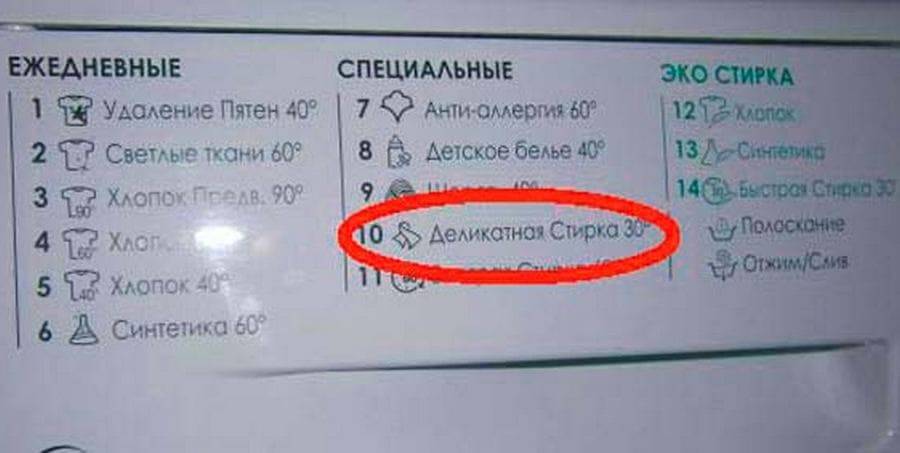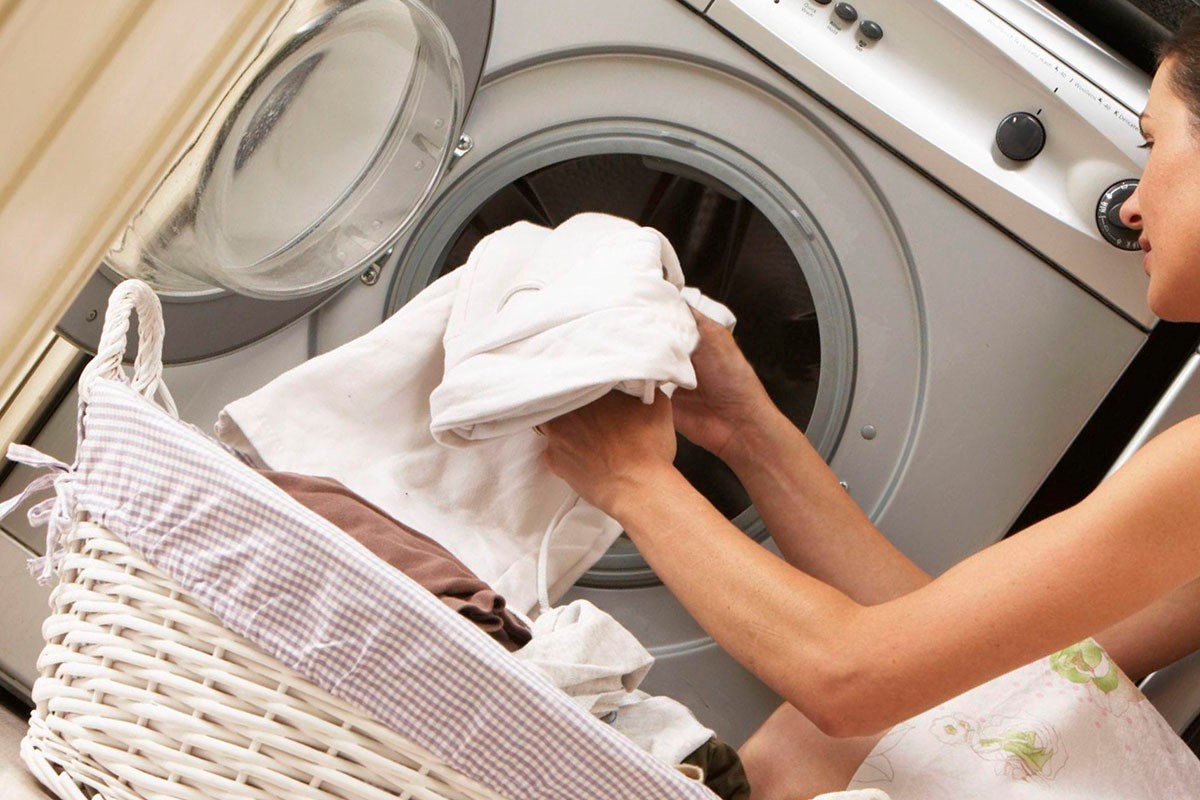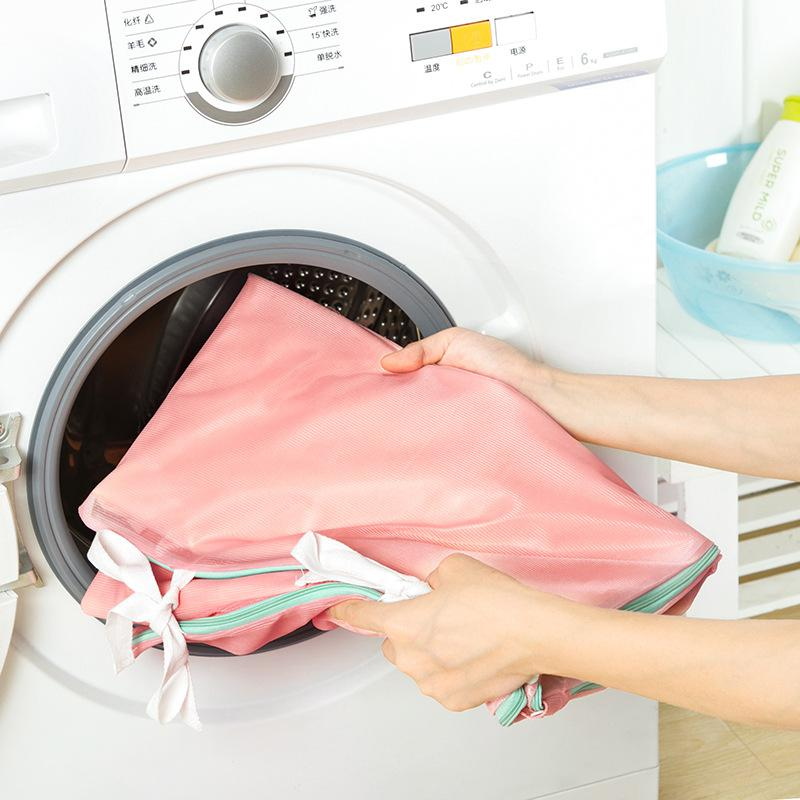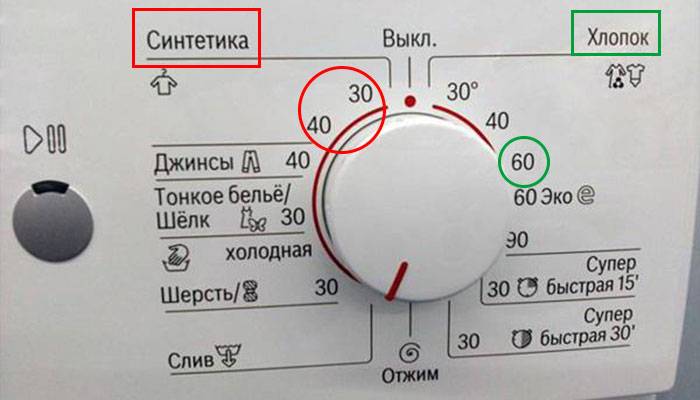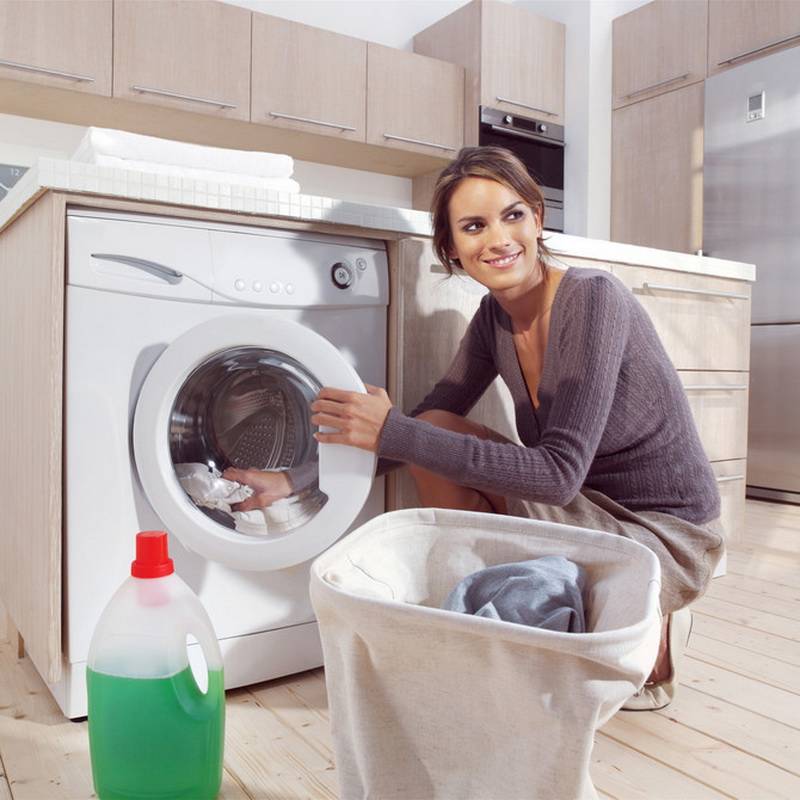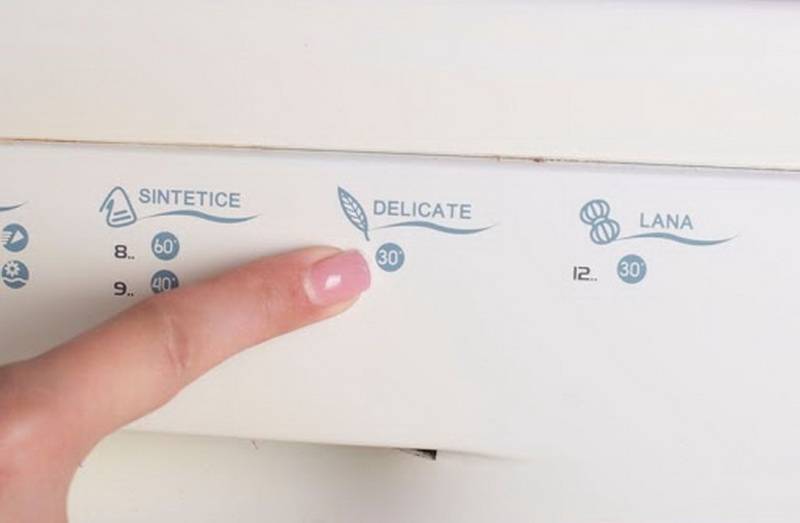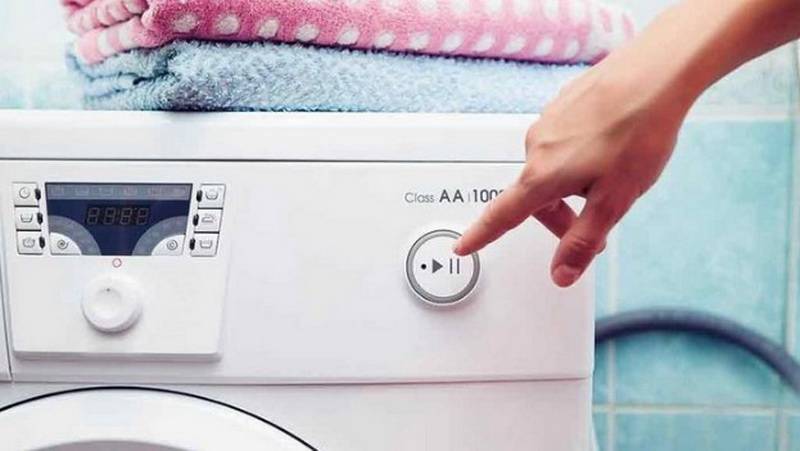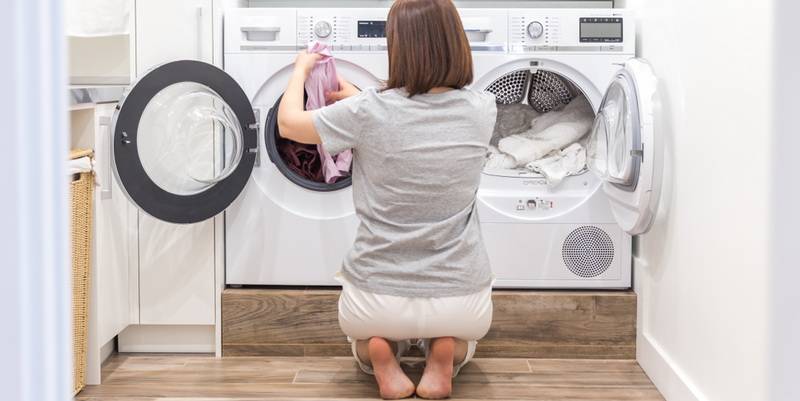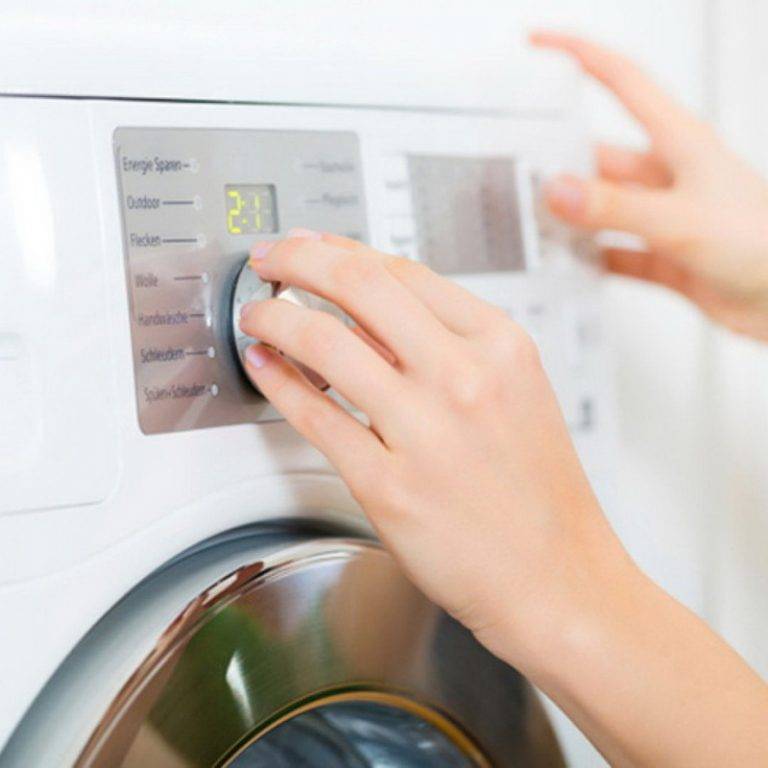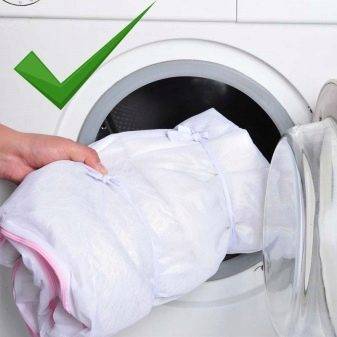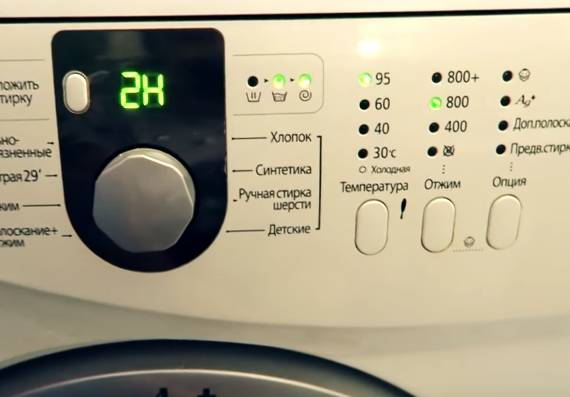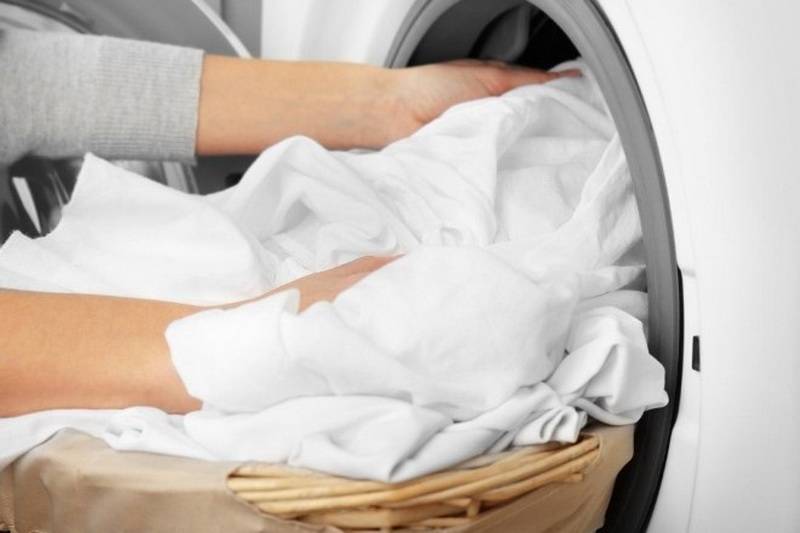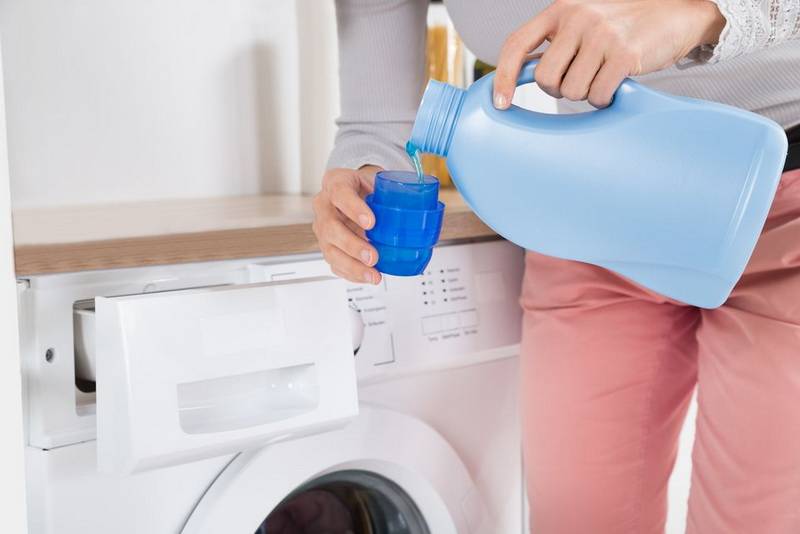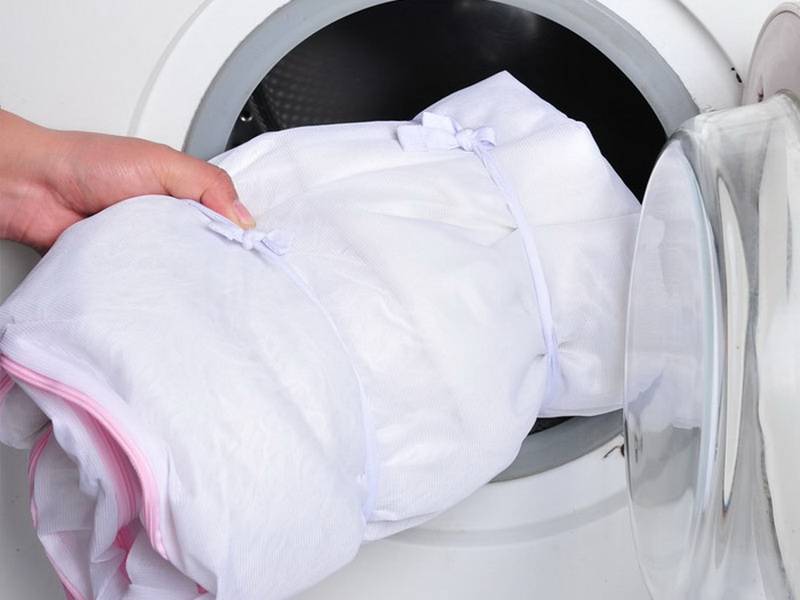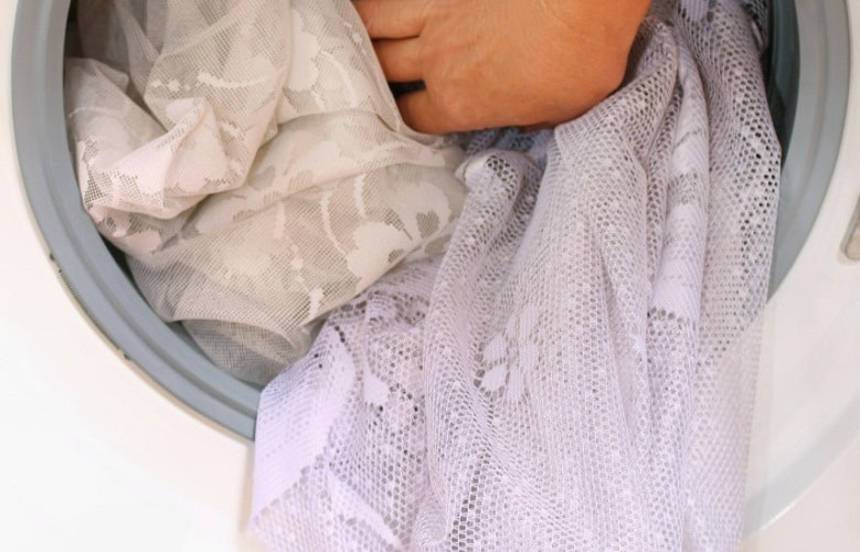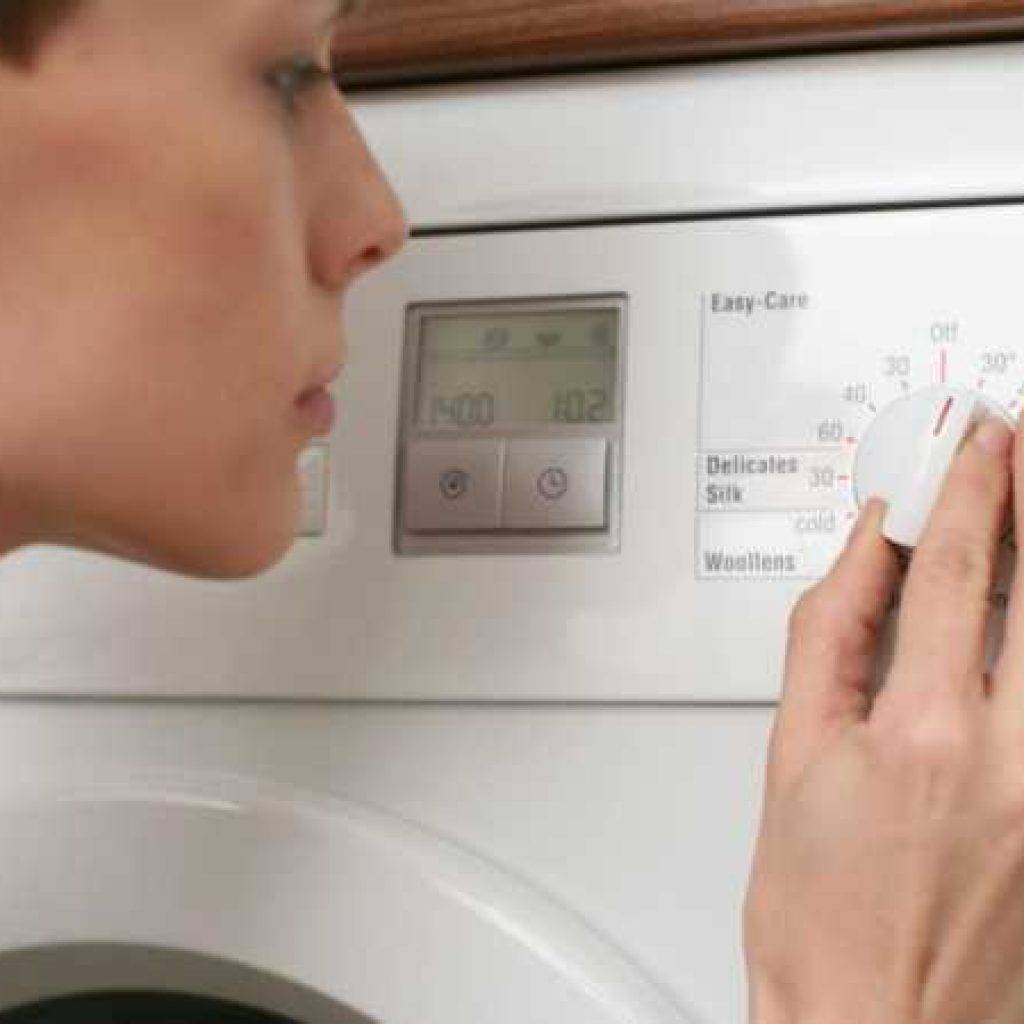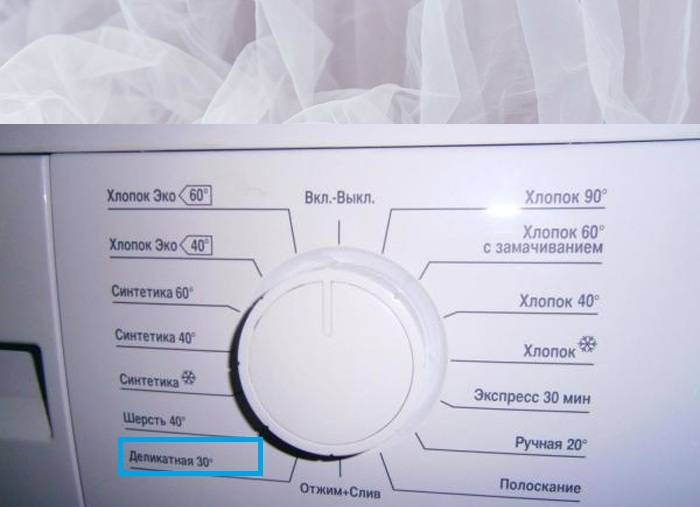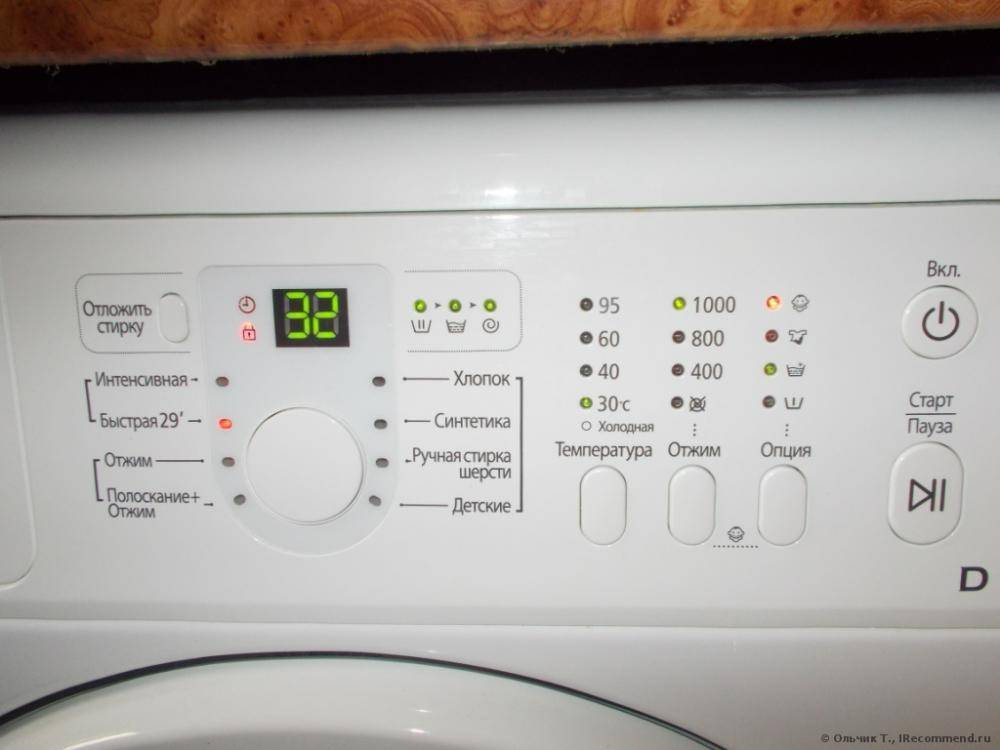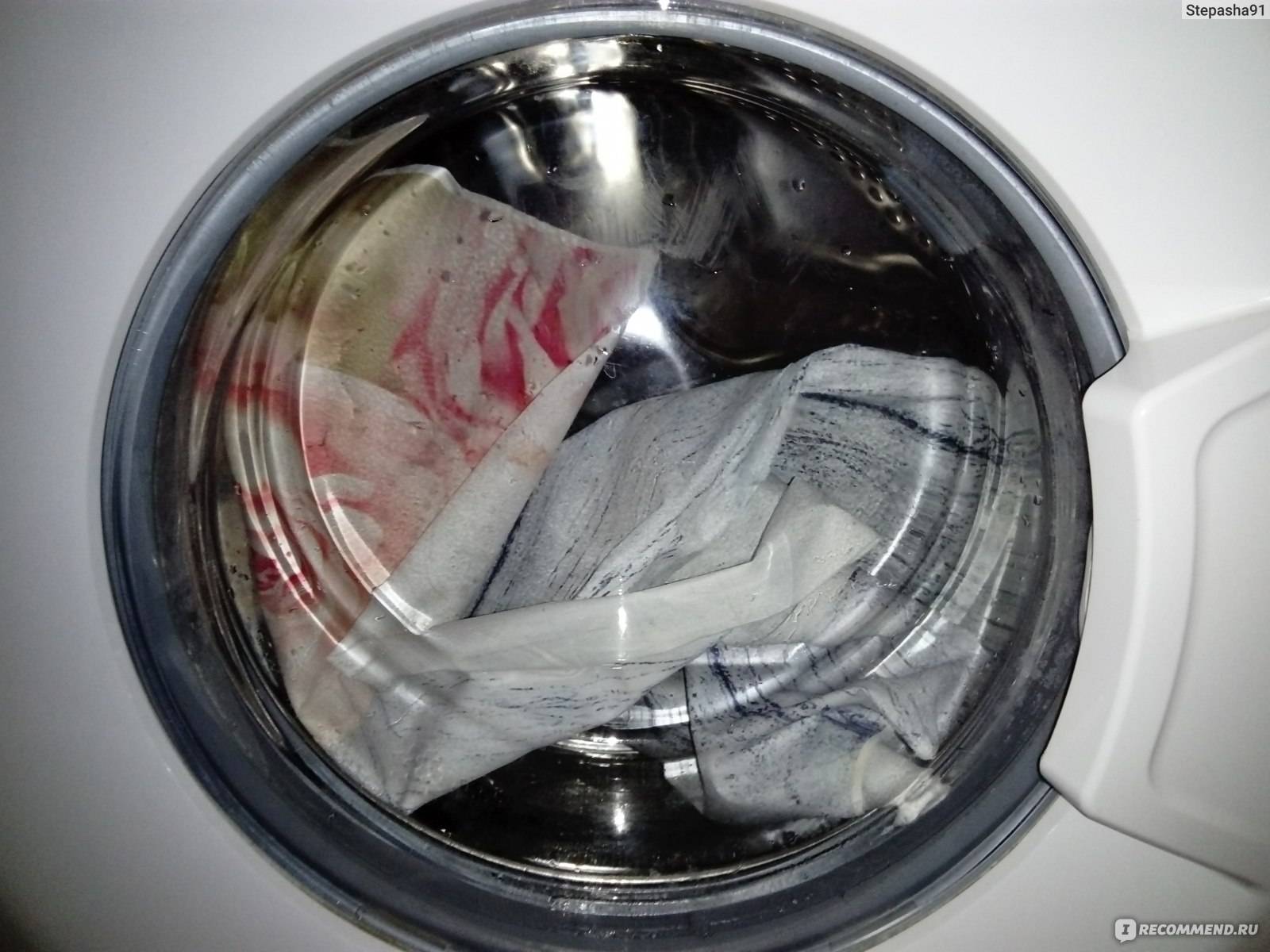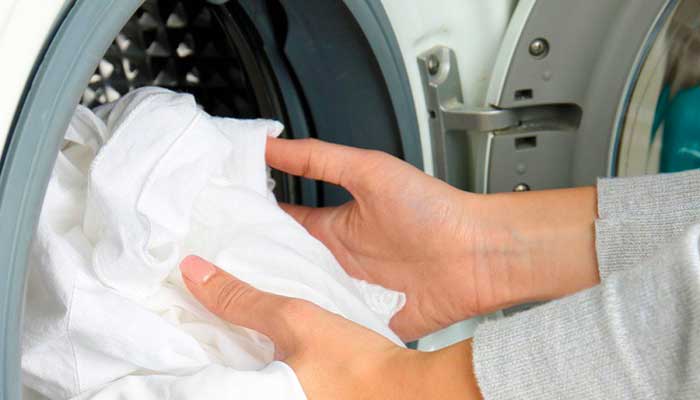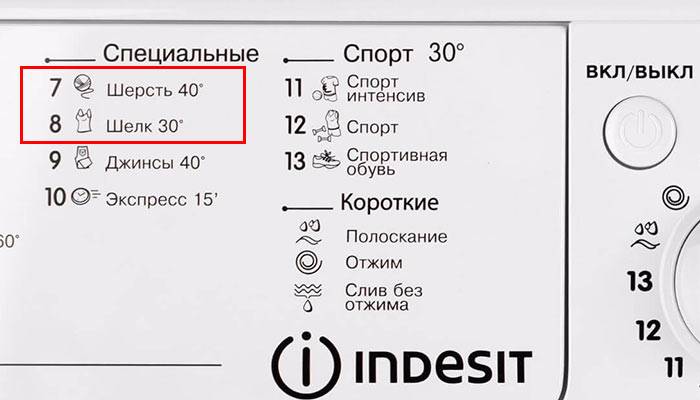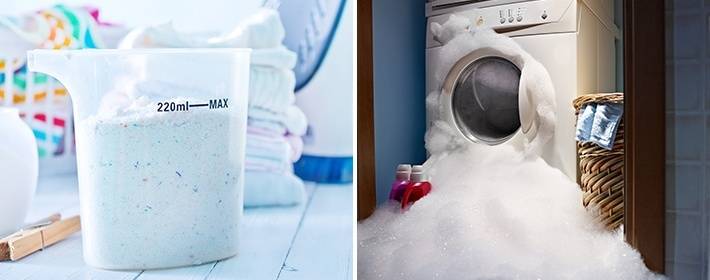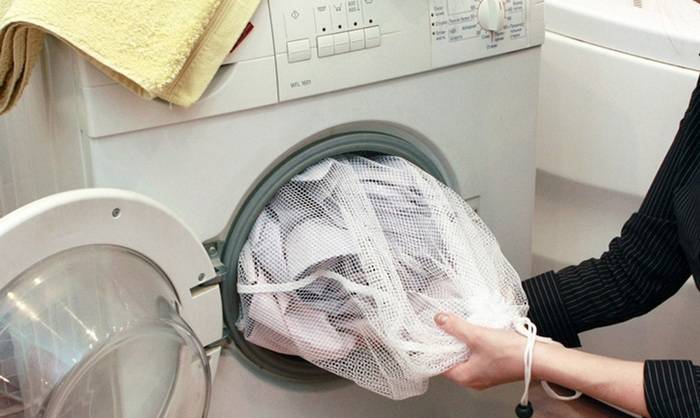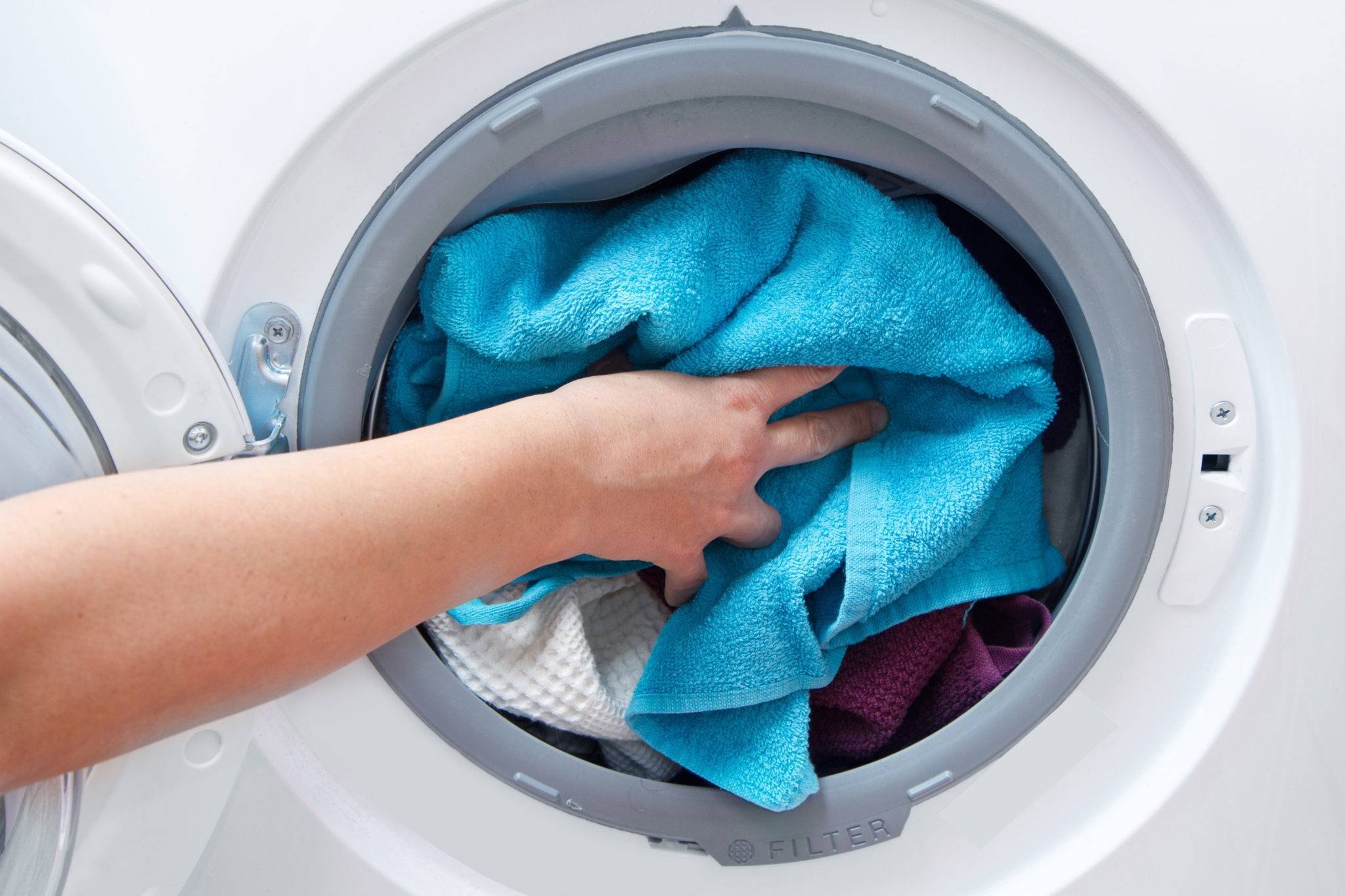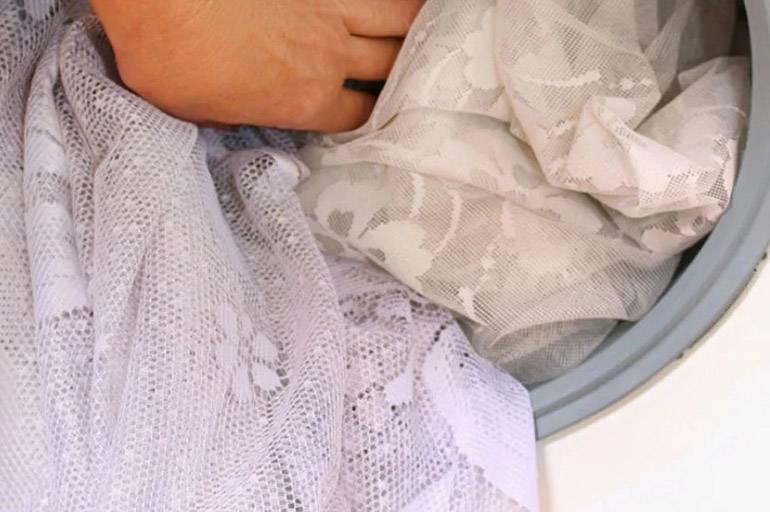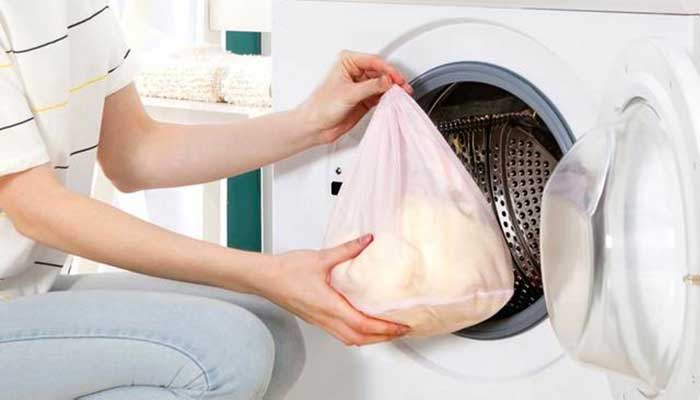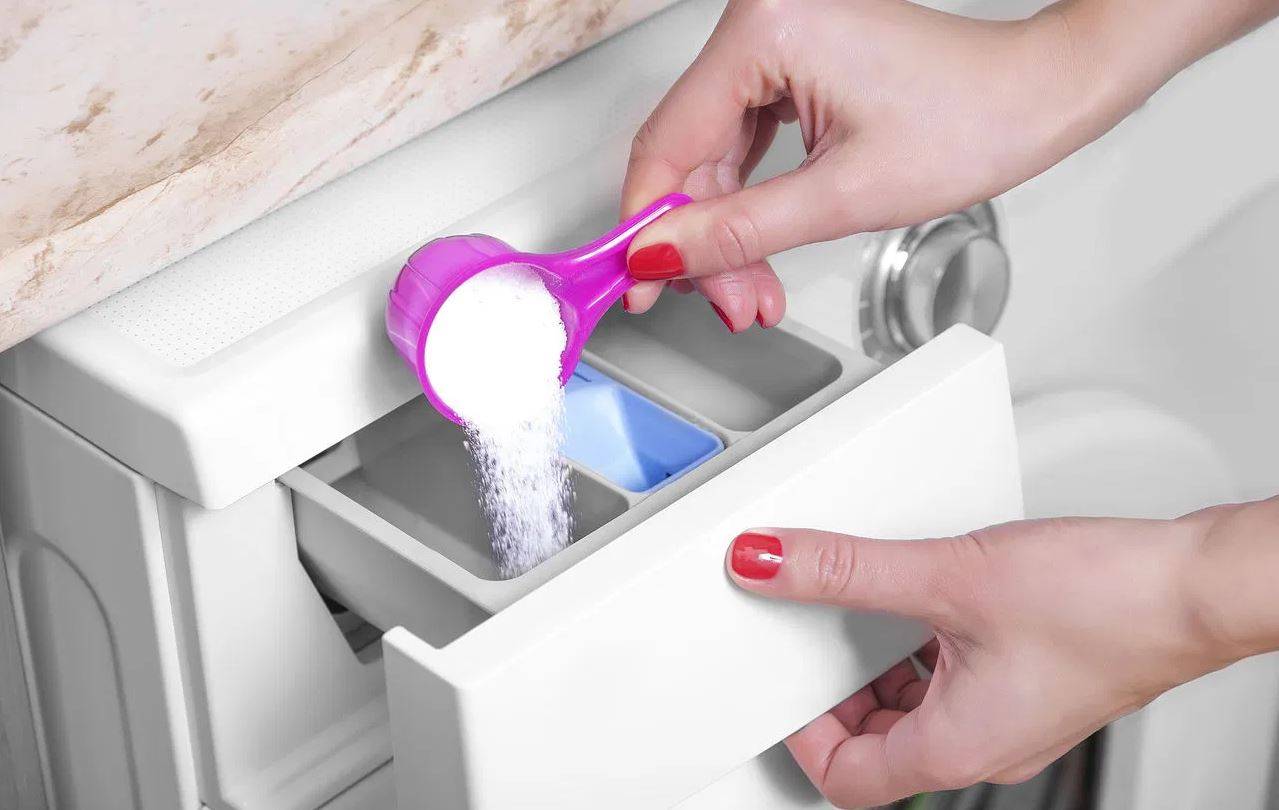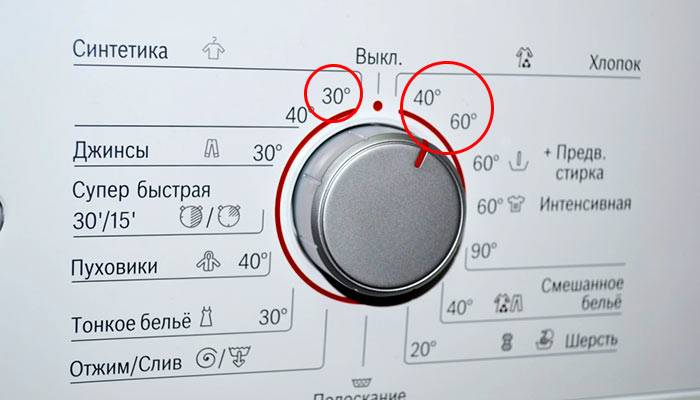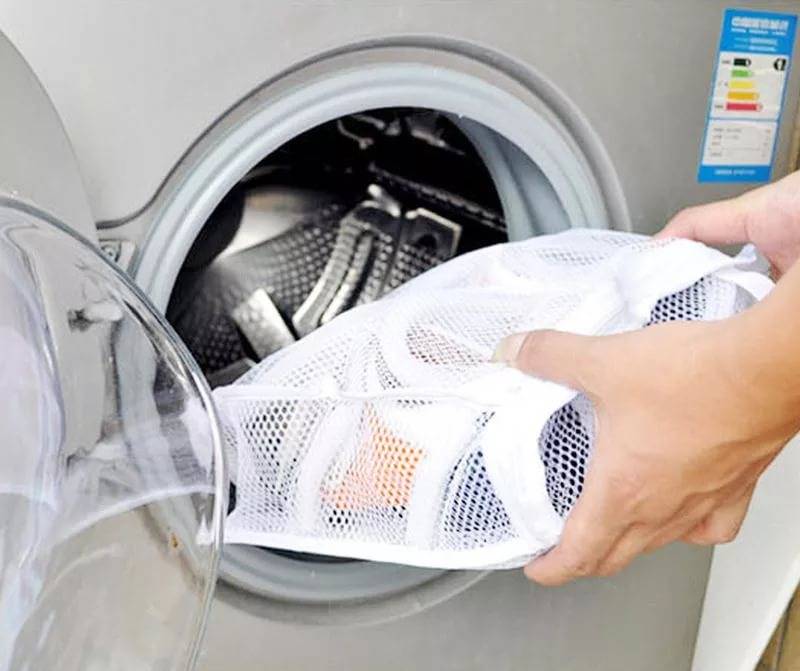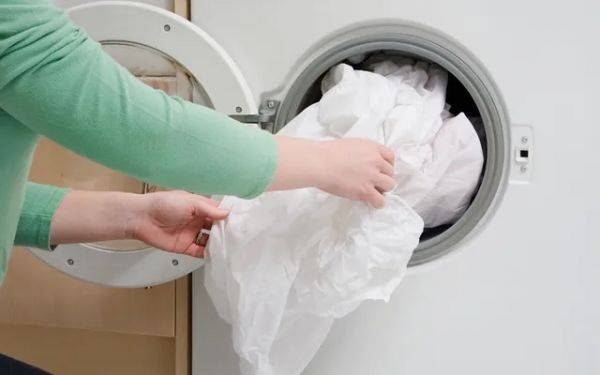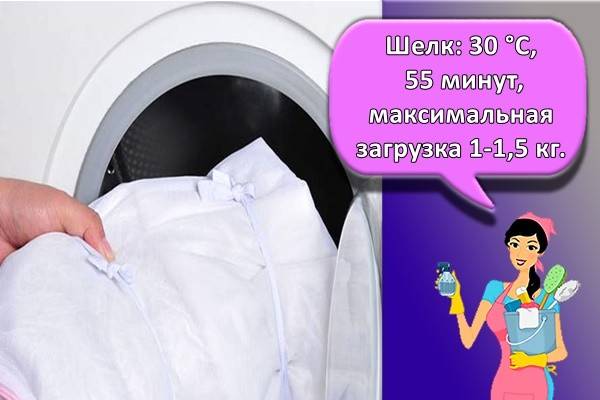How to wash tulle so that it is white
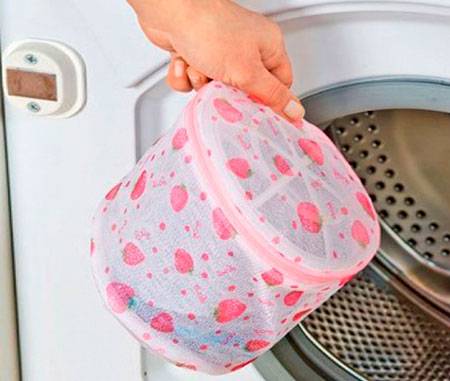 If your tulle has already undergone many washings, has acquired a characteristic yellow or grayish tint, it is difficult to revive it. However, there are still several ways, if you wish, you can use them. The fabric that has lost its freshness can be tinted, for a start, the curtains are washed by setting a gentle mode, and a little blue should be added to the tray when rinsing. The effect of using blue is immediately noticeable. This method is only applicable to pure white fabrics.
If your tulle has already undergone many washings, has acquired a characteristic yellow or grayish tint, it is difficult to revive it. However, there are still several ways, if you wish, you can use them. The fabric that has lost its freshness can be tinted, for a start, the curtains are washed by setting a gentle mode, and a little blue should be added to the tray when rinsing. The effect of using blue is immediately noticeable. This method is only applicable to pure white fabrics.
Unfortunately, blueprint is quite difficult to find in our hardware stores. If you failed to do this, you can use medical brilliant green. The solution must be made very weak, slightly greenish, curtains are immersed in it for the last rinse. The tulle just needs to be thoroughly rinsed and taken out of the water; it should not be kept in a solution of brilliant green for a long time. When you work with brilliant green, be extremely careful, wear old clothes and gloves. Brilliant green should not be handled carelessly; splashes that it can leave on the floor or clothes are difficult to remove.
If you need to remove soot from the white tulle, do not use strong products or hot water. In this case, the curtains will need to be washed in warm water with your hands, using ordinary laundry soap. Particularly dirty places are washed with dish detergent, rinsed, left for 10 hours in warm water with dissolved soda. Then the curtains are rinsed, the tulle is finished in the washing machine. Nylon, chiffon curtains are very difficult to wash off soot.
How to properly wash tulle so that it is white - for this, you should stock up on a special bleach for synthetic fabrics. It is added when washing in an automatic machine. Before using bleach, read carefully how to use it. Improper use of chlorine-containing substances can permanently damage your tulle. Oxygen powder can be used to bleach curtains. This is a very high quality, effective detergent that will make your tulle look like new.
We wash the tulle to whiteness
Over time, the curtains lose their whiteness, small specks and various spots appear on them. Of course, if you don't even remember how old your curtains are, then the matter is completely hopeless - you will have to buy new ones. But if the yellowness is not yet so strong, then something can be done.
A quick way to clean
If the yellowness on the curtains is not so strong, then try to soak it in warm baking soda solution overnight before washing the veil in the washing machine or other tulle. After that, the curtains are thoroughly rinsed and sent to the washing machine for the main wash.
We remove a little yellowness
Dissolve a tablespoon of table salt in a liter of cold water. The curtains should be soaked in the solution for a couple of hours. If the effect is not noticeable, then you can leave the tulle in the solution overnight. The curtains are then rinsed in cold water and washed with detergent. The tulle should become noticeably whiter.
We remove greasy traces
Such contamination is often found on kitchen curtains. To remove the greasy mark, sprinkle the stain with potato starch. Then the starch is lightly rubbed into the fabric, and after 15 minutes it is removed. The stain should then be wiped off with a bleaching agent such as stain soap. All that remains is to wash the tulle in a typewriter.
The second life of the old curtain
One reliable method will help to restore its former whiteness - the tulle should be rinsed after the main wash in a blue solution. The material should be whiter after the first try.You can replace the blue with brilliant green. A very weak solution is prepared from brilliant green. And they rinse the washed tulle in it.
You can also use ammonia. 1 tbsp. a spoonful of the product is diluted in a bowl of hot water. Add 2 tbsp to the water. tablespoons of peroxide. The solution will turn out to be aggressive, so you only need to immerse the tulle in it with gloves. The curtains should lie in the solution for 15 minutes, after which they are rinsed thoroughly. But this option is not suitable for patterned curtains.
Bleaches
Great if you have oxygen powder or quality bleach. Use the product according to the instructions
But please note that chlorine bleaches are not suitable for curtains, as they aggressively act on delicate material and easily damage it after prolonged contact.
Washing rules for different types of curtains
Each curtain requires a different approach to washing. It is necessary to take into account not only the material of the product, but also its type. The following models are popular today:
- You can wash curtains with eyelets in the washing machine without using stain removers, bleaches or other aggressive detergents. Before that, it is better to remove the eyelets or make sure that they do not oxidize when moisture gets in. Select the washing temperature, referring to the symbols indicated on the product label.
- Thread curtains. These models are best hand washed. In extreme cases, they can be placed in a linen bag and only then put into the drum. This is done with models made of bugles. A program is selected that provides heating up to 30 degrees. Products with wooden and metal elements must not be exposed to moisture.
- Tulle. It must be soaked in cold water before washing without adding detergents. This will help make the fabric look crisp white. Small amounts of bleach may be used.
- Not everyone can wash blackout curtains. Such opaque curtains are made multi-layer. If they have a metallized or acrylic layer, then it is better to do with dry cleaning or wash by hand. Before placing the product in the machine, test it for color fastness. To do this, apply a little detergent to an inconspicuous area of the canvas and rub it a little. If the color of the product has not changed, you can safely wash it. Use a program with a temperature of 40 degrees. After the machine stops, hang the curtains in their place.
- Roman curtains. Before washing them, you must pull out the entire slats and other parts that should not be exposed to moisture. You cannot wash such curtains in a typewriter. Hand wash only recommended. Shampoo or baby neutral powder is used as a detergent. If there is strong contamination, they are treated with a stain remover. It is necessary to insert the slats back before the fabric is completely dry. Otherwise, it may lose shape.
- Roller blinds. Such models cannot be washed, especially in a washing machine. They are cleaned of dust with a vacuum cleaner. If there are stains that are difficult to remove, they are washed with a sponge dipped in soapy water. You can wash off the remnants of the product with the help of a shower. If during this procedure the canvas is wrinkled, it can be ironed through a cotton cloth.
- Japanese curtains. They are long plastic panels. You won't be able to erase them. It remains only to process the panels with soapy water. Models made of rattan or bamboo should be vacuumed. The ingress of moisture on them hi to delamination of the material. The model will lose its appearance and become unusable. Fabric curtains are also made in the Japanese style. You cannot wash them in a typewriter, this is done exclusively by hand. In this case, the curtain is soaked in cold water with the addition of a liquid detergent. After rinsing thoroughly, the strips are left to dry.When they are completely dry, they can be mounted in a permanent place.
Washing curtains is a simple process that any housewife can handle. The main thing is to remember a few simple rules that will allow you to preserve the original appearance of the product and the integrity of the washing machine.
How to machine wash tulle: rules and recommendations
The basic requirements that you need to know in order to properly wash the tulle include the paramount parameters: the correct temperature (depending on the material), the composition of the cleaning agent (it must be gentle, since a powerful bleach can damage the structure of the delicate tulle). To get the most out of the unsurpassed whiteness, you will need to include some cleaning aids in your wash. Also, you need to find out if machine wash is allowed for your specific curtains, or you need to use only hand wash.
Information on the recommended washing mode can be seen on the curtain label in the form of symbols
Each symbol indicates a particular mode of washing, ironing or drying the fabric.
After washing, there are a number of subsequent activities, which include drying, steaming with an iron. These requirements are usually set by the manufacturer himself, and include them in the recommendations / instructions that come with the product. However, if you do not have this (especially if the curtains are not factory-made), then you will need to wash according to the general rules.
General recommendations for washing in an automatic machine
If your curtains are not factory-made, but of your own tailoring, or there are simply no recommendations attached to them, the procedure below will be very useful for you. We will consider the rules in relation to specific types of materials, and tell you what nuances should be observed in this or that case.
- Organza tulle - it is recommended to wash it exclusively on your hands. If this is not possible at all, use the washing machine, but only in the delicate wash mode, at the obligatory water temperature - no more than 30 degrees. Avoid any mechanical impact: the material is extremely delicate, do not twist or squeeze it. Ironing is allowed only with a warm iron.
- Polyester - can be washed in the normal cycle (everyday wash cycle), at a temperature of 40 - 60 degrees. Ironing through a slightly damp cloth, not with a hot iron (moistening is necessary).
- The veil is almost as delicate as organza. Requires especially careful handling. You can iron such curtains only through a cotton or gauze cloth (preferably through a cloth soaked in water).
- Nylon tulle is the least whimsical material. Calmly tolerates washing in a washing machine on a daily basis, at a temperature of 60 degrees. However, it is better to refrain from chemical bleaches.
The nuances of machine wash
Compared to hand washing, machine washing is the least labor-intensive and simplified option. Another plus in favor of the indisputable advantages of automatic washing is that you yourself can adjust and adjust any parameter, depending on your needs, material and other things. And such a charm as "delicate wash" - simplifies the process of handling delicate materials, moreover. Thus, you can machine wash any type of tulle.
The delicate mode in the washing machine is a special program of gentle care for delicate fabrics
During this wash, the drum fills with a large amount and rotates smoothly, minimizing the risk of damage to the fabric
Sequencing
Before placing your curtain in the drum of the washing machine, we recommend that you pre-soak it, in the same way as you would do it by hand washing. The fabric is densely covered with dirt, it is better to soak and rinse it several times.
For thin and expensive tulle, it is better to use a liquid detergent for delicate fabrics, which is designed for a low temperature and rinses well
For washing lace material with openwork, there is a special bag where you can put your curtain, and not worry about its safety. To do this, the tulle must be carefully rolled up, put in a bag, and the bag must be placed in the drum of your washing machine.
A special bag will not interfere with washing, but it will save delicate fabric
Next, we set the delicate wash mode to the required temperature of 30 degrees. If the material of your curtains is made of natural ingredients, then it can be washed as usual, with a water temperature of 40 to 60 ° C. If possible, set an additional rinse, but without spinning.
To achieve the best whiteness effect, you need to mix a little blue color or oxygen-based bleach (always without chlorine) into the washing powder.
Spinning is also undesirable - you just need to hang the washed tulle, let the water drain, and leave it like that until it dries completely.
General rules for washing tulle
Tulle requires delicate care - even when it comes to inexpensive nylon mesh curtains. This fabric does not tolerate exposure to high temperatures - too hot water or an iron can lead to yellowing of the fabric. Therefore, the tulle is washed in lukewarm water and try not to iron it.
At the same time, the curtains do not require intensive washing - the dirt leaves the fabric well enough, especially if you do not "start" the process. Tulle curtains need to be washed every 3-4 months - in this case, it will be quite easy to keep them whiteness. But, if we are talking about kitchen curtains, if the windows overlook a highway with heavy traffic, or if family members are allergic to dust, it is better to increase the frequency of washing.
Since dust usually accumulates on the curtains, it is advisable to shake the tulle on the balcony or on the street before washing. In this case, washing will be more effective.
Preparing for washing

Hand washing tulle curtains is a very laborious and complicated process, but an automatic machine comes to the aid of modern housewives. It will provide a high-quality and flawless wash, but before starting the process, you need to do the following:
- Shake out the dust curtain. Dust always accumulates on the mesh surface of tulle curtains. So that the washing result does not disappoint, and you do not have to wash the fabric again, it is advisable to shake out the curtain outside.
- We straighten and fold it neatly. Having sent a carelessly folded curtain to the car, after washing, you can find a large number of creases, which even a thorough steaming will not help get rid of. That is why it is better to gently straighten and fold the fabric.
- We will use a special case. Such devices will preserve the integrity of the canvas, and also protect the washing machine from damage if the curtains are decorated with various small decorations in the form of sequins, beads or beads.
Material type
Before washing the tulle in the washing machine, the machine needs to determine from which fabric the curtain is sewn. Then, based on the composition of the material, use one or another method of caring for the product. Today, textile attributes are made from a wide variety of fabrics:
- Silks. It is a natural material with extraordinary beauty. As a means of household chemicals, special gels or compositions for washing children's clothes are recommended, a gentle cleaning mode is used.
- Viscose. It looks flawless, with its unique shine resembles a silk surface. The fabric requires special handling; special compounds that do not contain alkali are selected. It is afraid of exposure to hot water and air, as under their influence it rolls down and shrinks, the normal water temperature is 30 degrees. Does not tolerate spinning and drying. After washing, the canvases are hung on the cornice.
- Polyester.A synthetic material that is durable and durable. With proper care, it will retain its original appearance for many years. The machine washes in a standard mode, the water temperature does not exceed 60 degrees. Withstands the average heat of the iron, but you need to iron the fabric through gauze or other material.
- Caprona. Just like the previous type, it is durable and requires adherence to some care recommendations. If the temperature is neglected, the fabric may turn yellow. Washable in water heated to 35 degrees. It is forbidden to use chlorine-containing bleach, the fabric can be easily cleaned from dirt even in cool water.
- Cotton. To remove stains and dirt, you can use water heated to 70 degrees, well, if the fabric contains artificial fibers, then the temperature should not exceed 40 degrees. Complete cleaning of dust occurs only after a long wash. Sometimes bleaching agents are used to make the whiteness look. Such fabrics need to be starchy. Drying is not allowed: a damp cloth is ironed and hung.
- Organza. Such products are washed gently or by hand. The temperature should not exceed 35 degrees. Cannot withstand aggressive squeezing, twisting. Rubbing such material is also not recommended. If necessary, it can be ironed by setting the minimum heating of the iron. Chiffon curtains are washed in the same way.
- Veils. A delicate wash cycle is used with water heating up to 30 degrees. The fabric does not tolerate the effects of bleach and other chemicals. Iron on through cotton fabric.
- Kisei. Washable in a special case, at a temperature not exceeding 35 degrees. Previously, the threads can be braided into a pigtail. Does not squeeze out, excess moisture must drain off on its own. Not ironable! Hanging slightly damp threads on the cornice is allowed.
Useful Tips
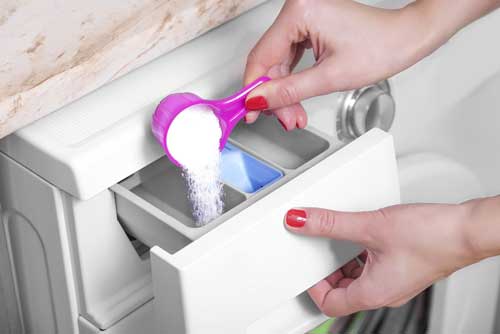
Here are some helpful tips to help keep your curtains clean:
- To prevent dust and dirt from absorbing into the fabric, the tulle must be shaken well before washing.
- The tulle must be washed before bleaching. At what temperature should the tulle be washed? For thin fabrics, it is better to use a temperature of 30-40 degrees, thicker fabrics can be washed at 60 degrees.
- When washing, take into account the material from which the curtain is made.
| Material | Washing features |
| Nylon | For nylon fabric, gentle bleaching is suitable. Before use, you should examine the label of the curtain, it should indicate whether the chemistry can be used. From folk remedies, potassium permanganate, brilliant green, starch and salt are suitable. |
| Organza | Organza is a more capricious material, does not tolerate hot water and can quickly fade if bleached incorrectly. Water for washing organza tulle should not be heated more than 40 degrees. Folk remedies: ammonia and hydrogen peroxide, salt and brilliant green. |
| Veil | The veil should not be washed and bleached with purchased household chemicals; it is recommended to use starch or ammonia to whiten it. |
| Linen | For linen fabrics, many suitable products can be found at hardware stores. Linen tulle can be washed in warm water with the addition of ammonia. |
| Jacquard | Chemicals are not suitable for jacquard, any bleaching is also unacceptable. We recommend hand washing this fabric with soap. |
How to bleach curtains
No matter how good our light curtains are, over time from dust and exposure to light a shade of gray appears on them, from improper care they may look yellow. So it's time to bleach the tulle.
When it comes to how to wash curtains made of ordinary cotton or linen fabric, then everything is simple. To have such a white fabric, you can use any bleach, but you have to be careful with a delicate tulle. Bleaches with chlorine are contraindicated for them. How to bleach tulle at home in a washing machine?

We have already figured out how to wash tulle in a typewriter. The main thing here is to set the appropriate mode. Similarly, there is also no particular difficulty with bleaching, the main thing is to choose the right bleach. Chlorine-free oxygen bleaching agents are suitable for this. They will quickly return a fresh look to the white curtains.
Manufacturers even produce special products for curtains and tulle. They not only effectively and gently whiten, but also lightly starch them, helping to maintain their shape. The only drawback of such special tools is the rather high price. Therefore, many are wondering how to bleach tulle at home using available tools?
Here it is worth remembering the blueprint, beloved by our grandmothers. Its weak solution is poured into the washing machine instead of the conditioner. Greenery can be another optical brightener. It is diluted to an almost transparent, barely greenish state and is also added instead of a rinse aid.
You can also use a baking soda solution before washing in the machine for soaking.
In this case, it is important to rinse the curtains thoroughly before washing.
Choosing household chemicals

A wide range of products is available for washing tulle fabric. A detergent is selected based on some characteristics of the fabric. Modern stores offer a variety of powders and gels. What to prefer and how to make the right choice?
Special means for tulle
They are particularly effective as they remove all impurities from the fibers of the mesh material. The whitening effect and starching give the curtains an unmatched look. Such compositions form little foam, therefore they are confidently used for an automatic machine, as well as for the care of expensive fabrics. For better cleaning, a powder enhancer is used.
Traditional powders
They are selected depending on the color of the textile. For white fabrics, powders with a whitening effect are needed, and for colored fabrics, compositions that preserve the tone of the dyed tulle material are needed.
Gels for delicate items
They are used to care for wool and other fine fabrics, and can also be used to wash synthetic tulle in various shades. Gentle gels tackle even the toughest dirt in cool water. They are easily washed out without leaving streaks.
Means for children's things

Effectively removes stains from grease, soot and other substances, washes white tulle, does not leave streaks. It is preferable to wash cotton and synthetic fabrics and kitchen curtains.
Silk compounds
For washing expensive silk tulle, it is advisable to purchase a special balm. It protects the fiber structure and copes well with dirt.
Folk remedies
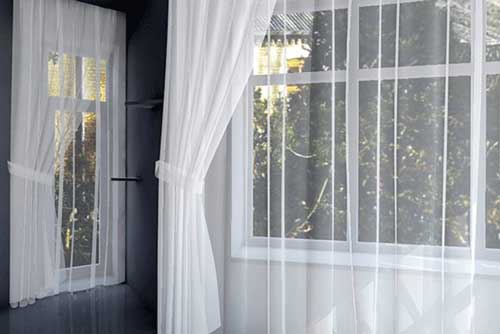
If store-bought bleaches did not cope with the task or they are not at hand, you can use folk remedies.
| Means | Mode of application |
| Laundry soap | Grate the soap, pour into a bowl of water and put on fire until it boils, soak the cloth in soapy water for a day and wash. |
| Soaking | To get rid of yellowness, you need to soak the tulle before washing. There is no need for bleaching agents for this. Place the cloth in a bowl of cold water and leave it on for a while. When the water turns gray, it needs to be changed. So until the water becomes clear. You can then wash it with regular powder. |
| Digestion | One of the oldest methods, suitable for cotton and linen fabrics. For digestion, you need a basin or a stainless steel bucket. Pour water into the dishes, add grated soap, bleach and washing powder. Put the container on fire and wait for the water to boil, add the curtain and boil for two hours, stirring occasionally. |
| Aspirin | Stir four aspirin tablets in five liters of water, soak tulle in this mixture for 3-4 hours, then wash. |
| Hydrogen peroxide and ammonia | The fabric should be washed before using the solution with hydrogen peroxide and ammonia. The solution is prepared as follows: for ten liters of water, a spoonful of ammonia and two tablespoons of peroxide. We dip the curtain into it and leave it for half an hour. |
| White | Whiteness should not be used often as it destroys the structure of the tissue. The whiteness of various manufacturers is on sale, so before using it, you should carefully read the instructions and icons on the bleach bottle. Not all bleach is suitable for tulle. Whitening occurs as follows: immerse the fabric in a basin of warm water and leave it for an hour, then wash it with fabric softener. |
| Yogurt | The tulle should be soaked in natural curdled milk for a day, and then washed with fabric softener. |
| Salt | Preparing a saline solution: 8 tablespoons of salt in 10 liters of warm water and a little washing powder. We soak the curtain in this solution and leave it overnight, then wash it in a typewriter. Do not make the water and salt too hot, otherwise the white fabric may turn yellow. |
| Zelenka | Dissolve fifteen drops of green stuff in a glass of water and leave for 15 minutes. If a precipitate appears, then the solution will have to be redone. Pour the solution into the basin and distribute the curtain evenly, then dry. |
| Blue | Dissolve the blue cap in a glass of water and pour it into a basin with warm water, immerse the tulle in the solution for 30 minutes, then wash it in a typewriter. |
| Potassium permanganate | Dissolve half a glass of potassium permanganate in fifteen liters of water. Rub the tulle with laundry soap and put it in potassium permanganate for 30 minutes, then wash it as usual. |
| Starch | First, the tulle must be washed and immersed for half an hour in a solution of starch, and then washed again. |
| Lemon acid | Stir the package of citric acid in warm water and hold the cloth in the solution for half an hour. |
| Soda | Pour five liters of warm water into a basin, add a tablespoon of baking soda, soak the curtains for 30 minutes. |
How to iron tulle?
The easiest option is not to iron the tulle at all. You can wash the curtains on a no spin cycle and then lightly wring them out by hand. Then the curtains are simply returned back to the cornice in a wet state, where they sag and straighten themselves.
- Nylon curtains do not need to be ironed at all, as the water quickly drains from them, and the tulle will smooth out on the cornice under its own weight.
- The cotton material also does not need to be ironed. But if you decide, then you need to do it from the inside out and at the lowest temperature.
- All synthetics need to be ironed only through the fabric, otherwise you risk completely ruining the material. In addition, yellow spots quickly appear on synthetics from the iron. Do not use a spray bottle when ironing synthetics, as water drops will leave traces.
- Viscose can be ironed with a dampened iron. You can even turn on steaming. But only from the inside out.
- Silk and polyester can only be ironed through natural fabric or white paper.
- Embossed tulle can be ironed, but only from the inside out and without steaming.
In general, any tulle can be smoothed out with a steam cleaner only after you hang it on the cornice.
Selecting a wash cycle depending on the type of fabric
For washing, it is better to choose a liquid detergent, as it rinses out better from tough linen fibers. It is better to refuse automatic spinning and let the water drain on its own outside the washing machine. Dry away from heat sources, iron a not completely dry product or use a steamer.
Roll
Rolled cloths can be cleaned without removing. For their processing, the following devices are used:
- Vacuum cleaner. They are passed over the entire surface of the curtains.
- Wet matter. It can be used to remove stains and dust.
- A sponge soaked in soapy water. It is used for greasy stains.
- Eraser. Dark streaks are removed.
Tulle requires gentle handling. However, its undoubted advantage is that it is easy to clean.
To prevent the matter from deforming, you must use the following recommendations:
- shake off dust from the fabric;
- place it in a laundry bag;
- load into the machine, setting the mode "delicate wash" or "silk";
- the water temperature should not exceed 30 degrees, and the spin is turned off completely;
- wash the product and leave to dry unfolded.
The tulle should be washed using liquid detergents. Hang the tulle slightly damp. This will eliminate ironing.
Blackout
Blackout is a blackout curtain that does not let in sunlight. It is recommended to clean them by hand without removing them from the eaves. A vacuum cleaner and a damp cloth are used for this purpose.
With the help of technology, dust is removed, and stains and other serious dirt are removed with a cloth dipped in soapy water.
This article will tell you about washing blackout curtains.
With eyelets
When processing curtains with eyelets, it is recommended to refuse machine wash. When this is not possible, they must be placed in a mesh bag. If the iron ring breaks off, it will remain inside it and will not damage the drum.
The water temperature and the washing mode depend on what kind of fabric the curtains are made of. Spinning is not recommended. To prevent the iron rings from dulling or rusting, wipe them with a soft cloth immediately after washing.
Thread
When washing curtains, the most important thing is to prepare them correctly.
Guide to action:
- Weave the curtains into braids.
- Place them in a laundry bag.
- Set the "gentle" mode with a water temperature of no more than 40 degrees.
- Cotton curtains can be wrung out at a speed of 400-500 revolutions.
- Remove the product from the bag and immediately hang it on the cornice. When they are in place, they are unwound and allowed to dry completely.
If you do not first braid braids from the curtains, then they will become very tangled. It will be difficult to spread them out.
Ironing methods for various materials
For ironing curtains, methods are used that correspond to the specifics of a particular fabric.
Ironing curtains is comfortable enough on an ironing board, but this task can be done faster if you have a large and long table.
Organza
To iron organza curtains, you should follow the following rules:
- it will not be possible to smooth out the organza quickly, since it is a very difficult material to iron;
- it is necessary to use an iron with an absolutely clean sole without mechanical damage;
- you need to use tissue paper, and iron only completely dry organza;
- the function of "steam" should be completely excluded: it leads to wave formation on the tissue, which is not eliminated.

For cotton and linen tulle, use the following rules:
- after washing, such fabric is not wrung out;
- the washed wet tulle is hung on the baguette, so it will gradually be smoothed out without an iron;
- a slightly damp cloth is ironed well with an iron at a temperature of 100?;
- the curtain must be ironed from the inside out through cheesecloth.
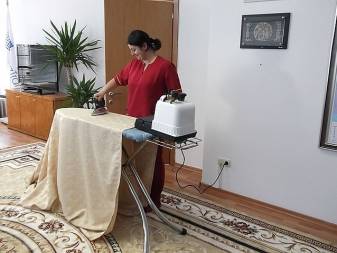
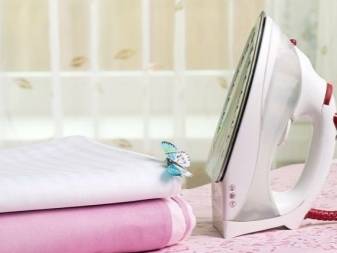
The artificial tulle does not straighten naturally, it is ironed as follows:
- at a temperature of 110-120 degrees in a slightly damp state;
- inside out with the obligatory use of wet gauze.
It is best to try ironing a small section of the fabric first to determine the optimal temperature.
Often housewives resort to ironing curtains that are hung on the cornice after washing. This procedure is easy to accomplish with a steam generator or steamer. This way you can save both effort and time.

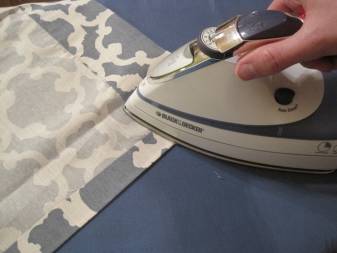
Tulle, washing methods and conditions for excellent results
Tulle is a special fabric made in a special way from synthetic or natural fibers: polyester, polyester, polyamide, silk, cotton and so on. Due to the clever manufacturing method, the fabric can not be attributed to either woven or wicker.During its production, the longitudinal warp threads are not intertwined with each other, but entwined with bobbin threads, in this regard, the fabric is light, translucent, which transmits light well and hides objects behind it.

Tulle, or rather the material itself, is quite whimsical, and accordingly, it is far from always possible to bleach it with ordinary powder.
Tulle has many varieties, it can be smooth, mesh, covered with embroidered patterns. The most favorite types of tulle fabrics are organza, muslin, mesh, veil.

In the sewing of modern curtains, there is a tendency to use organza, using polyester.
Today, the care of delicate fabrics has become much easier: improved household appliances and innovative technologies used in the production of detergents give excellent results. But it is possible to achieve the whiteness and freshness of tulle with improvised means that can be found in every family, without using expensive means.

Washing in an automatic machine on a daily wash mode can not only not wash off unpleasant yellowness or remove grayness, but even damage the material itself.
In order to keep the tulle intact for a long time, you must adhere to some rules:
- wash 3-4 times a year, timely removing gray and yellow plaque from the fabric;
- be sure to follow the recommendations on the labels of the fabrics and choose the methods and temperature of washing depending on the type of fiber;
- use gentle detergents;
- abandon the machine spinning.
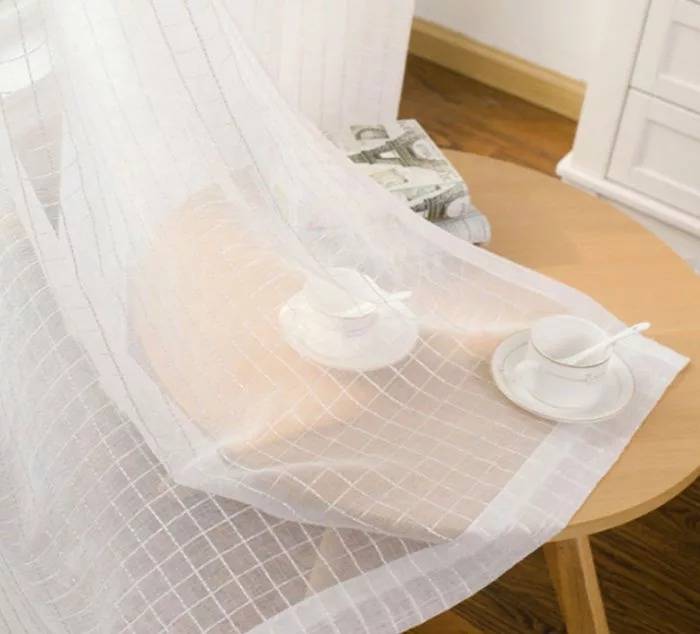
It is also important to consider: at what temperature to wash the tulle, take into account the presence / absence of color patterns, ornaments, texture. When choosing detergents and bleaching agents, it is necessary to take into account how the washing will be done: by hand or by machine. This point is very important, since it is easier to bleach tulle in a machine using modern detergents, and hand washing requires different means and approaches.
This point is very important, since it is easier to bleach tulle in a machine using modern detergents, and hand washing requires different means and approaches.
When choosing detergents and bleaching agents, it is necessary to take into account how the washing will be done: by hand or by machine. This point is very important, since it is easier to bleach tulle in a machine using modern detergents, and hand washing requires different means and approaches.

Tulle requires delicate care, even when it comes to inexpensive curtains.

